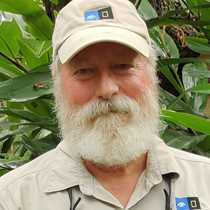Caen to Cherbourg, Normandy, France
Today was our Longest Day…so far. We devoted the day to the World War II Invasion of Normandy (also known as D-Day or Operation Overlord), which took place along the 60 mile-long shoreline extending between Caen and Cherbourg beginning on June 6th, 1944.
This long shoreline was divided into two major sectors. Sector 1 was assigned to American forces, and included Utah Beach and Omaha Beach, and Sector 2 was given to British and Canadian forces, which included Sword, Juno, and Gold beaches.
We set off from Caen right after breakfast and drove along the coastal zone to Arromanches, a modest seaside resort where an amazing artificial port was constructed just days after the initial landing. This quick setup (known as Operation Mulberry) was one of the most extraordinary industrial and maritime achievements of the entire war. The pier segments consisted of huge floating concrete structures called caissons (each weighed seven tons or 7,000 kilograms), which were built in England and towed across the channel to this shoreline and set in a long, curved pattern. Ships could then pull around to the inside of the breakwater and offload their equipment in protected waters. Floating roads were attached to the pier and traffic could be kept moving constantly to and from the ships as supplies were brought ashore. Amazingly, we could still see some of the remains of this artificial port just offshore from the Landing Museum which has a wonderfully depicts the landing operations with both models and films.
Our lunch was served at the delightful restaurant-château La Chenevière in Port en Bessin. After the delicious French meal, we enjoyed a little free time walking in the beautiful gardens where we could admire a diverse collection of trees from around the world. I think everyone’s favorite specimen must surely have been the ancient Ginkgo tree, located near the château, which had some very bizarre stalactite-like growths on its main trunk and lower branches (see Photo A).
We continued on to Colleville Sur Mer for a visit to the impressive American Cemetery (see Photo B) located just above the American landing site known as Omaha Beach. The cemetery contains 9,387 white marble grave markers and covers an area of 172.5 acres. There is a circular memorial with a symbolic statue of lost American youth, as well as detailed maps depicting the Normandy region on one side and the entire European Theater on the other.
Behind the memorial is the Garden of the Missing, which has an additional 1,557 names on the surrounding wall depicting those whose bodies were never recovered. This serene site can create a very emotional experience under normal conditions, but this was enhanced today when we encountered a contingent of American representatives of The Ancient & Honorable Artillery Company of Massachusetts (chartered in 1638). The group included Admiral Mullins, Chairman of the Joint Chiefs of Staff, and they laid a wreath and stood at attention during the playing of Taps. Nearby is the scenic overview of Omaha Beach, where the German forces had an excellent view and a perfect defensive position to cover of the crescent-shaped landing beach below.
Several of us walked down to the beach and enjoyed very beautiful conditions, struggling to imagine what the murderous conditions must have been like during the invasion…when the sand and inshore waters were stained bright red with American blood.
Our next point of historic interest regarding D-Day was the famous Pointe du Hoc, a high promontory which held what was believed to be a significant defensive position with six large guns that could be used against the Allied invaders. This is the infamous cliff face that was scaled by a small force of U.S. Army Rangers who came to destroy the guns before the invasion reached here. The 245 rangers were nearly all lost in the ensuing fighting over the next several days, but they succeeded in their mission. As we walked around the destroyed German gun emplacements and countless bomb craters, we could get a sense of the difficulty entailed in this mission…especially when standing near the 150-foot (45-meter) high cliff edge.
Our last site on the long excursion was at the town of Sainte-Mère-Eglise, located in the center of the traditional Normandy livestock breeding area. It was here that the American 82nd Airborne Division landed during the night before the invasion began. The town’s main church is rather well-known as a result of paratrooper John Steele getting caught on its roof cornice when his chute entangled there and left him hanging helplessly as the fighting raged around him (he survived). It is interesting that the church contains a beautiful stained-glass window featuring the Madonna and Child surrounded by members of the American parachute drop.
Just in front of the town hall, we saw the 0 Milestone, which symbolized the start of the Road to Freedom. From Sainte-Mère-Eglise, we continued on to the port of Cherbourg, where we ended our amazing day-long trip and reboarded the National Geographic Explorer.



